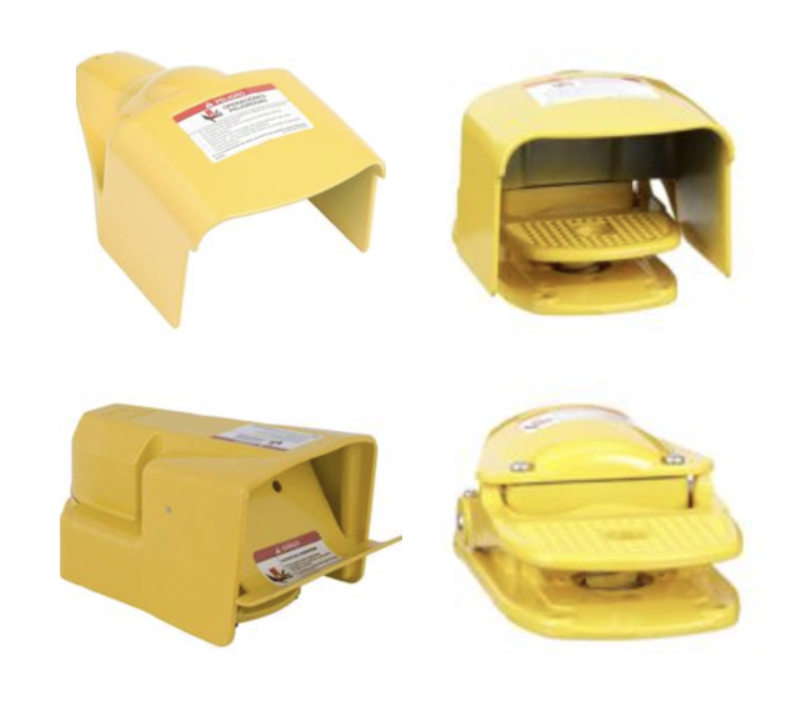Foot Switches

Foot switches are multifunctional devices found in industrial and commercial spaces that allow equipment and machinery to be operated in a hands-free manner. They are activated when an operator has pressed down on a pedal, attached to a machine. You will find them in such diverse environments as manufacturing plants, medical facilities, and motor vehicle repair shops, all for the very good reason that they are foot-activated and thereby allow those who use them to keep their hands free for some other highly productive task.
Foot switches are configured to meet the specific needs of certain operations. They come as single or dual pedals, with momentary or maintained contact options, and with various actuation pressures to suit the operator's needs. This variety allows selection of the model best-suited to the application—be it machines, tools, or medical devices that are controlled by foot switches. Because these are often used in situations where an accidental activation could be dangerous to the operator, the switches usually incorporate safety features like guards and non-slip bases to help ensure that they do not activate unless the operator wants them to.
More Information about Foot Switches
Besides being practical, foot switches have another aspect that makes them ideal for use in various environments: they are very easy to integrate into existing systems. This is partly because they work with so many different kinds of equipment; you could say that foot switches are compatible with just about anything you might configure them to work with. And even when their specified use doesn't match with the kinds of applications you have in mind, foot switches often have features or capabilities that effectively allow for systems integration.
FAQs
Are foot switches typically in stock in a machine shop?
Yes, foot switches are typically in stock in a machine shop due to their common use in operating machinery and equipment.
Maintaining NEMA 4 Rating When Making Enclosure Penetrations
Cutouts are very common when modifying enclosures for push buttons, indication lights, conduit entries or mounting hardware. Cutting into an enclosure runs the risk of eliminating the protective nature of the NEMA rated attributes. Proper steps must be followed in order to preserve the NEMA rating of an enclosure.
Devices mounted to the enclosure must have the same NEMA rating as the enclosure.
This means that if the devices are installed to the manufacturer's specifications, they will be able to maintain the NEMA rating of the enclosure.
Water tight conduit hubs must be used when running wire through a cutout in an enclosure.
There are many different types of conduit hubs that are used to secure conduit to an enclosure. However, only certain conduit hubs are rated for a watertight seal. By using water tight hubs, the NEMA rating of the enclosure is maintained.
Bonded washers are necessary when mounting hardware to an enclosure.
If standard mounting hardware is used, the NEMA rating of the enclosure will no longer be maintained. Bonded washers have rubber gaskets that make a watertight seal around the drilled hole. It is also important to make sure the material used for the bonded washer matches the material of the enclosure. Stainless steel enclosures require stainless steel bonded washers.

